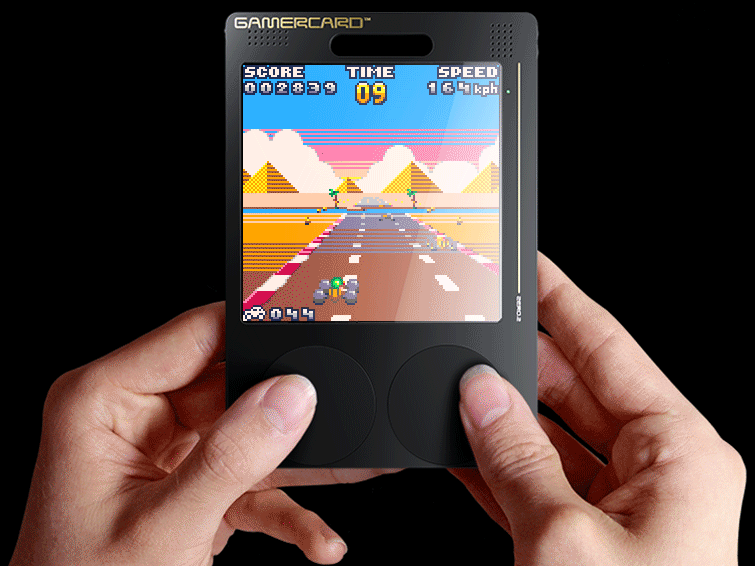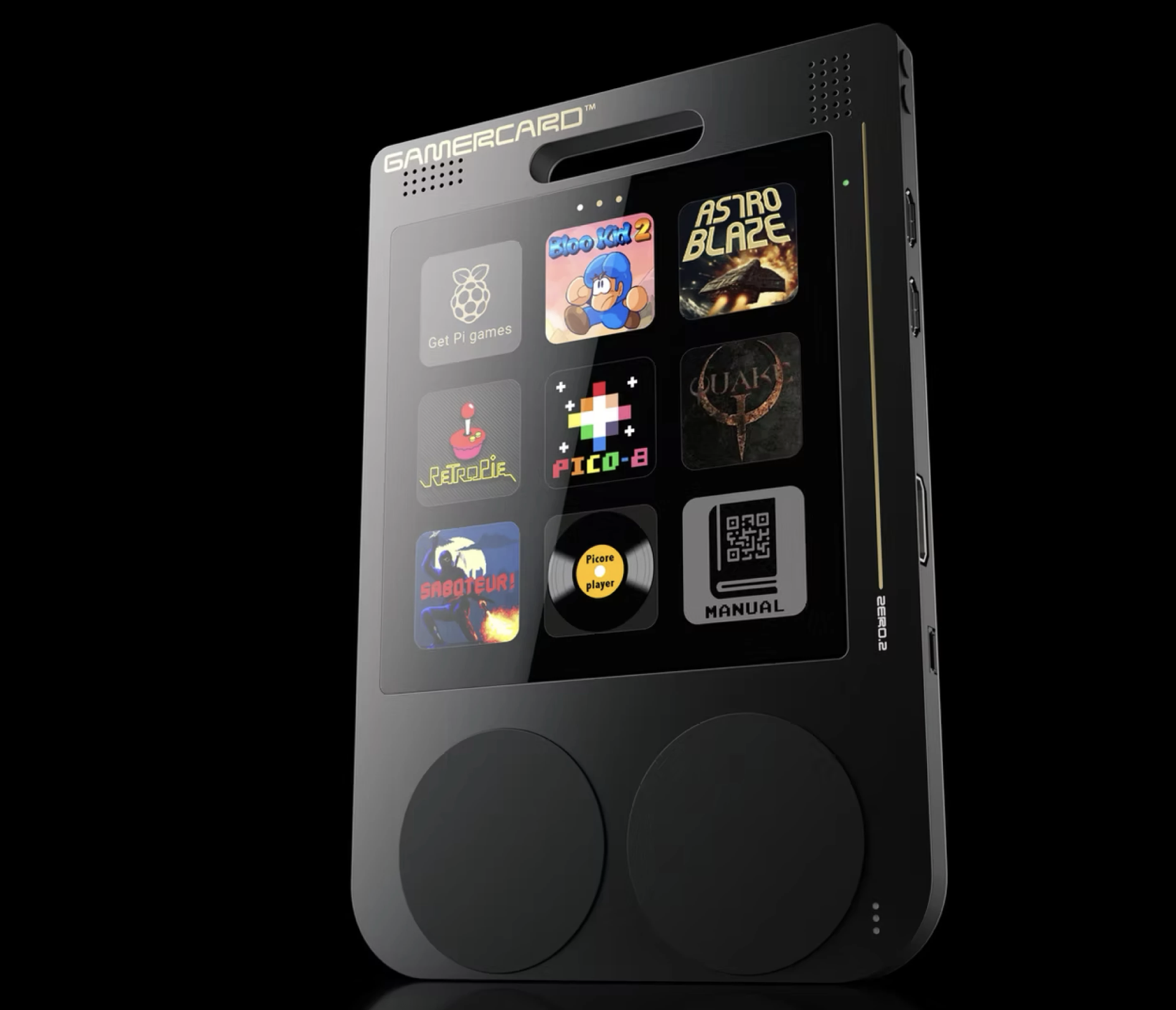Sinclair GamerCard's nostalgic soul and modern design rekindled my love of retro games
A minimalist retro game console that tries something new (and old).
The Sinclair GamerCard sounds like a gimmick. It even looks like a gimmick, a credit card-sized slab of plastic with a pixel screen, a couple of buttons, and branding that feels like a half-remembered 1980s computer that never happened. It’s easy to write off. A toy. A novelty. A throwback no one asked for. But here’s the thing: that’s exactly what makes it special, and, more importantly, exactly why it matters.
You see, I've been in a rut recently with my love of retro gaming. It used to be fun, interesting, with each new release not just a trip down memory lane but a celebration of the culture I grew up on. The best retro consoles feel like a love letter to the games of old, and the art and creativity around them. And yet, it's now a business. Big business, even. A report in The Times suggests our love of old stuff will exceed $1 billion this year.
It means new retro consoles can feel functional, bland. Good, technically, and designed to play classic games well, handhelds like Retroid Pocket 4 Pro and our Dan's favourite, the Miyoo Mini Plus, are excellent, but do they celebrate old gaming culture or simply offer a way to play? And the number of me-too, China-made retro handhelds can feel like e-waste.

Lo-fi design-first retro gaming
This is where Sinclair's deliberately lo-fi GamerCard succeeds, as it not only offers a serious piece of design but feels like an extension of ZX Spectrum and the idiosyncratic design choices that made rubber keys a thing in the '80s (I still love the design choice, but remember plugging away BASIC code on a ZX81 in the back pages of C&VG was a pain). So, while GamerCard doesn't spec-chase, it doesn't count teraflops, but the way Sinclair rethinks what a retro console, a games console even is, just feels uniquely retro.
As gaming hardware has become bloated, physically and philosophically, the GameCard offers a leaner, smarter alternative. GamerCard is designed by subtraction, not addition, and it simply feels different for the right reasons.
The pocket-sized approach is novel and functional. It boots instantly. The battery lasts for days, not hours. There’s no noise, no heat, no updates waiting to install. You press a button, and you’re in the game. Just like the old days. No ads, no menus, no tricksy algorithms nudging you toward a microtransaction. It’s pure gaming.

It’s also, somehow, delightfully modern. The GamerCard might channel the spirit of the ZX Spectrum and the odd design choices Sir Clive Sinclair made, but its sensibilities are anything but purely retro. The OS is clean and intuitive. Games load fast. Everything feels deliberate. And unlike some nostalgia consoles, this one has a purpose beyond collecting dust.
Daily design news, reviews, how-tos and more, as picked by the editors.
The GamerCard is carving out its lane, and doing it with confidence. And yes, it runs real games. Not knockoffs, not bootlegs. There’s already a small but passionate ecosystem of developers creating titles specifically for this device, from twitchy arcade shooters to meditative puzzle games. Some are entirely new. It comes with Bloo Kid 2 and AstroBlaze DX pre-installed; these Nintendo Switch games have been reworked to fit on the GamerCard's unique 4-inch square IPS display.
Games made on PICO-8 work here too, making it more than just a handheld for 'old' games. But whether new or old, games here are minimalist and inventive. But they all share one thing: intent. Every byte matters on the GamerCard, and you can feel that care in every frame.

The spirit of ZX Spectrum design
If anything, the GamerCard feels like a spiritual successor not just to the ZX Spectrum, but to ideas long abandoned by mainstream gaming. That games can be small and still meaningful. That constraints breed creativity. That the best hardware doesn’t always scream for attention, it just works, quietly and beautifully.
Of course, it’s not for everyone. For the price – $170 / £125 – and the spec – a Raspberry Pi Zero 2W with a quad-core ARM Cortex-A53 processor, 128GB storage, and a 1600mAh battery – you can get more elsewhere. The previously mentioned Retroid Pocket 4 Pro is better money-to-spec, but it doesn't feel like GamerCard. Evercade's £50 Hyper Mega Tech handhelds, pre-installed with classic games from Neo Geo, Taito, Atari, and Capcom, are better value. But, they don't, well… feel like GamerCard.
And that’s the point. The Sinclair GamerCard isn’t chasing market share or headlines. It’s for people who love games as well as unique design. For those who remember the joy of finding something weird and wonderful on a shareware disc, a MAME list, or who spent hours figuring out every button input in Dragon's Lair. In some ways, GamerCard feels like an evolution of not only the ZX Spectrum, but every failed oddity since – Neo Geo Pocket, Namco WonderSwan, the *cough* Gizmondo – I love it even more.
Sinclair GamerCard is not trying to be a console for everyone. It’s trying to be a console for the right someone. And if you give it a chance, you might just realise that someone is you.

Ian Dean is Editor, Digital Arts & 3D at Creative Bloq, and the former editor of many leading magazines. These titles included ImagineFX, 3D World and video game titles Play and Official PlayStation Magazine. Ian launched Xbox magazine X360 and edited PlayStation World. For Creative Bloq, Ian combines his experiences to bring the latest news on digital art, VFX and video games and tech, and in his spare time he doodles in Procreate, ArtRage, and Rebelle while finding time to play Xbox and PS5.
You must confirm your public display name before commenting
Please logout and then login again, you will then be prompted to enter your display name.
